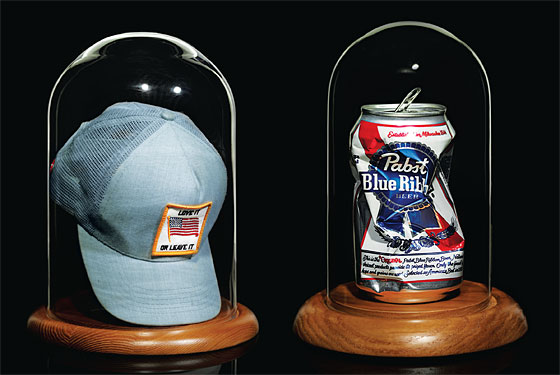These two events have more in common than alcohol and my inbox. Shapin's argument that oenophiles constitute an evolving "taste community" is increasingly true for craft beer in the United States. While not amenable to Shapin's longue-durée approach, craft brewing provides an alternative view of technology, economics, and aesthetics – capitalism, you might say! – with a peculiarly American flavor.
Check out that promotional video. It's all flags and amber waves of grain – Benedict Anderson in a pint glass. And the pride is well-placed: as announced at last week's Craft Brewer's Conference, the industry posted a 15% retail spike in 2011, reaching 5% of the domestic market by volume and topping 2,000 breweries for the first time. (There are lots of write-ups on the "beer bubble" – for a start, try this and this.)
 |
| Craft Beer capped off another growth year in 2011 |
The first has to do with connoisseurs. If we take Shapin's point that taste shapes scientific inquiry and gustatory behavior alike, the beer industry affords a window onto shifting standards and social stratification that wine simply can't provide. While it's no surprise that oenophiles have elaborate systems for evaluating wines (and one another), the ever-expanding Beer Advocate – a review hub and "taste community" of its own – might be a little less familiar. The shifts in vocabulary and behavior Shapin likes are happening way faster in the craft beer community – and around a product that until recently was viewed by consumers and detractors alike as wine's simpler alternative.
 |
| Yes, I did a Google Image search for "wine snob." |
The second point of interest has to do with a technology: the can. A decade ago, there were precisely zero craft brewers canning their beer. And then, as the saying goes, there was Dale's. While Oskar Blues spent a while as the sole hand-canner in the industry, we're now in the midst of a revolution, with close to 200 craft breweries shipping cans in 2012.
 |
| Dale's Pale Ale (Oskar Blues Brewing Company) |
So what took so long? Taste. And not the taste of metal – while it's true that if you drink straight from the can the taste will be different than from a glass bottle, no metallic flavor leaches into the beer due to a water-resistant polymer that coats the can's interior.
Instead, it was taste in the sense Shapin is interested in. As the craft industry rose from its homebrewing roots over the '90s, microbrewers were careful to distinguish their products not as "alternatives" to big names like Budweiser and Miller, but as a different product entirely.
As they built a customer base, cans became the province of "domestic" behemoths (who bottled too, of course); craft brewers bottled because, well, bottling was higher-end (it's probably no accident that, at least until recently, most wine came in bottles too).
Even after Dale's plunged in, other brewers bided their time. One craft CEO is quoted as saying: “If consumers buy it and they want it and there is a market for it, we will do it." Makes sense, as does the lack of a market (if you buy my line about distinction). But what changed?
 |
| "What was the hipster," asked Mark Greif |
None of the sources I've cited point to shifting aesthetic norms (there are, however, the "Canny Awards" for best design); justification is economic and environmental, with no mention of convergence on Budweiser et al. In a market booming like craft brewing, technology, economy, and aesthetics – the sorts of things we've been discussing lately – are moving quickly, and together. A companion piece to Shapin's wine project might be in order.

1 comments:
N.B. A reader points out this NYT article by Adam Davidson from a few months ago on the craft economy more generally. Boston Beer Co. (Sam Adams) is a specific example of how craft can go big – which is another interesting point.
According to the Brewers Association, "craft breweries" produce fewer than 6 million barrels of beer a year. Until last year, though, that number was 2 million. Why the change?
Because in 2011 Sam Adams (BBC) was poised to top the old mark of 2 million. Losing BBC would mean losing a significant chunk of ostensible market share (on paper), so they did what any hungry trade association would do: they moved the goalposts.
Note: Only a member of this blog may post a comment.